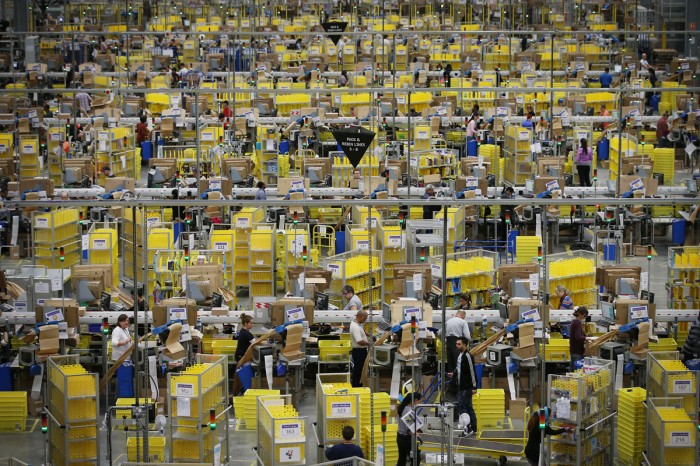How Amazon Loses on Prime and Still Wins
First there was Black Friday. Then Cyber Monday. Now Amazon’s got “Prime Day,” a day of discounts for members of its $99 Prime program.
Kids’ toys, apparel, vitamins, cleaning products. In all, 100,000 different items are discounted on the site today, July 12, with some deals cutting as much as 75 percent off prior prices.
This is Amazon’s second Prime Day, and it’s likely to be even bigger than last year’s, when the company rang up $400 million in sales, according J.P. Morgan analyst Doug Anmuth. (Net sales last year for the company, which topped our 2016 list of smartest companies, were $107 billion.) Worldwide orders were 266 percent higher than the same day a year before.
Maybe more important: Prime Day 2015 helped boost membership in the subscription shopping service. Prime members pay $99 a year for the right to two-day shipping on 30 million items, plus streaming video and music and other perks.
In return, Amazon gets customers to buy more from them than they otherwise might.
Analysts at Consumer Intelligence Research Partners estimate that Amazon has 63 million Prime members in the U.S., with 19 million joining since the first Prime Day last July. Those members spend more than the typical Amazon browser—on average $1,200 per year, compared to $500 per year for nonmembers, according to the research firm.

With Prime customers climbing, the retailer’s impact on sectors outside of traditional e-commerce, including digital music and streaming video, is also growing. According to a May survey of consumers by researcher Cowen and Company, 16 percent of respondents said they’d used Amazon Prime to listen to music, more than had listened to Spotify’s paid subscription or Apple Music’s. Prime Now, which offers same-day delivery in 40 metropolitan areas, is pushing into other businesses too, testing one-hour food delivery from selected restaurants in 12 cities.
One thing Prime is not is profitable, says Forrester Research analyst Sucharita Mulpuru.
Mulpuru estimates that free shipping on Prime purchases costs the online retailer $1 billion a year. Because of the logistical challenges of getting shipments to a customer in 48 hours, Prime orders often have to be split up and sent from more than one location—a big cost for a retailer operating at a thin profit margin to start with.
But even if Mulpuru is right, and the additional revenue from Prime is not enough to overcome the costs, that is unlikely to worry Amazon executives, she says. CEO Jeff Bezos’s business philosophy, she notes, is “that too much of a profit means you’ve lost an opportunity to grow.”
One advantage to carving out a buying holiday of its own, as Amazon has done with Prime Day, is that the retailer doesn’t have to compete with rivals also shipping goods as it does in the days before Christmas or other big shopping days like China’s Singles Day.
It’s likely too, Mulpuru says, that Amazon will be able to predict where different promoted products will be ordered based on historical patterns, and promote to existing members based on what’s in stock nearest to them.
Keep Reading
Most Popular
Large language models can do jaw-dropping things. But nobody knows exactly why.
And that's a problem. Figuring it out is one of the biggest scientific puzzles of our time and a crucial step towards controlling more powerful future models.
How scientists traced a mysterious covid case back to six toilets
When wastewater surveillance turns into a hunt for a single infected individual, the ethics get tricky.
The problem with plug-in hybrids? Their drivers.
Plug-in hybrids are often sold as a transition to EVs, but new data from Europe shows we’re still underestimating the emissions they produce.
Google DeepMind’s new generative model makes Super Mario–like games from scratch
Genie learns how to control games by watching hours and hours of video. It could help train next-gen robots too.
Stay connected
Get the latest updates from
MIT Technology Review
Discover special offers, top stories, upcoming events, and more.